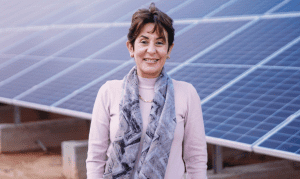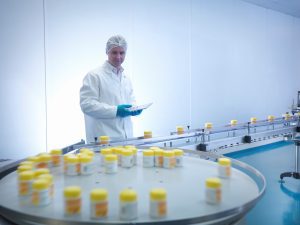
Climate change affects us all. Year after year, we witness a steady uptick in extreme and adverse weather events across the globe. Because of this, governments, businesses, and individuals are searching for solutions that will slow the pace of global warming. But progress will require a change in long-standing energy consumption habits and decarbonizing operations to make that happen.
Lowering emissions is no longer merely a choice for companies who wish to remain competitive. Shareholders, regulators, customers, and the general public are all demanding action and are linking purchase decisions to corporate climate accomplishments. Many manufacturers have already begun the hard work of reducing their emissions (Scope 1). But they must look beyond their walls to generate real progress. By targeting Scope 2 (indirect emissions from the generation of purchased energy) and 3 (emissions that occur within a company’s supplier value chain) emissions, we can make solid gains in the fight against climate change and reach our clean energy goals.
A path forward to decarbonization
The recently passed Inflation Reduction Act (IRA) and the Creating Helpful Incentives to Produce Semiconductors (CHIPS) Act in the United States are helping accelerate a change in energy consumption nationwide. These laws bolster the development of renewable energy generation, energy storage, and electric vehicles (EVs). And they encourage the build-out of sustainable manufacturing capacity, distribution networks, and other domestic supply chain assets.
The U.S. Treasury Department has announced “at least $45 billion in private-sector investment across the U.S. clean vehicle and battery supply chain” since August 2022. Another estimated $150 billion has poured into the country for utility-scale clean energy initiatives, more than the total spent between 2017 and 2021.
These government actions are in place because decarbonization isn’t happening fast enough. To achieve 100% clean electricity by 2035, the Department of Energy (DoE) estimates that electricity transmission capacity must expand by 60% by 2030. Corporate actions are crucial to accelerating the speed and scale of change. The government subsidies enable corporations to make tangible progress in addressing gaps in Scope 2 and Scope 3 emissions.
Reducing Scope 2 emissions through microgrids and energy management
Across the nation, plants are consuming more energy. New, rapidly expanding electric vehicle (EV) battery plants are heavy energy consumers. And, even though they produce “green” technologies, the power they utilize is not always clean. So, the issue of where these plants acquire their power is now front and center – making one of their challenges to reduce their Scope 2 emissions (indirect emissions associated with purchasing electricity, steam, heat, or cooling).
Depending on the location of the new plants, coal or other non-renewable fuel may very well serve as the primary source of available energy. In such cases, the business will need help to lower Scope 2 carbon emissions. Companies like Schneider Electric can help to address such issues by implementing solutions like microgrids as an alternative power source.
Local onsite Distributed Energy Resources (DER) form a collection that works together as a single system in a microgrid, enabling facilities to function outside the primary grid if necessary. Microgrids can be as small as a few solar panels and a battery. Or, they may be as large as an array of solar, wind, hydrogen, and other systems across multiple facilities or a community.
Energy management systems (EMS) also provide a big boost in lowering Scope 2 carbon emissions. They help orchestrate distributed energy resources (DERs) and manage energy purchases when prices are low.
The data gathered by an EMS boosts operational visibility. It can be easily used by facility operators to control utility-supplied energy consumption. As the EMS is configured, models can be generated that establish expected performance parameters. This makes it possible to identify sustainability initiative benefits. An EMS can also analyze billing data to allow for better optimization of electricity contracts.
Operators have the option of producing hourly, daily, weekly, or monthly personalized energy reports from that data. This information can be shared with both internal and external stakeholders. These reports consolidate utility-related carbon emissions and invoicing data. Users can then track whether the utility is supplying the facility with high or low-emissions energy.
The EMS can be configured to make automatic adjustments of energy loads and resources to optimize costs and facility uptime. The increased visibility enables operators to efficiently balance the various energy resources and to optimize both facility sustainability and resilience.
A proven track record for reducing supply chain Scope 3 emissions
Many companies who embrace renewable energy have placed their trust in Schneider Electric. We’ve established ourselves as the world’s largest corporate renewable energy advisor with a 60% market share in the US.
Within our global organization, we evaluate the carbon emissions of our leading suppliers (Scope 3). For example, organizations that provide us with the copper and steel we use to build electrical distribution networks must conform to our strict emissions documentation guidelines regarding the products they sell us. The emission reports they submit are an essential pre-condition for doing business with us.
We aim to further our reach by helping our top 1,000 suppliers reduce their CO2 emissions by 50% by 2025 through our dedicated decarbonization program. Through this, Schneider Electric consultants help corporations establish a framework for lowering their Scope 2 and 3 emissions. We give our suppliers access to the training sessions, expert support, tools, and solutions needed to accelerate and deliver on their sustainability goals.
A partnership you can count on
Schneider Electric is dedicated to the fight against climate change. Our solutions help you save resources while pursuing a sustainable, efficient, and resilient future. By working together to reduce Scope 2 and 3 emissions, we can mitigate our global carbon footprint and reach our clean energy goals faster – making a better world for everyone.
See how Schneider Electric is partnering with suppliers to reduce emissions at our Zero Carbon website. And, then learn more about how Schneider Electric can help you reduce your company’s emissions.




Add a comment